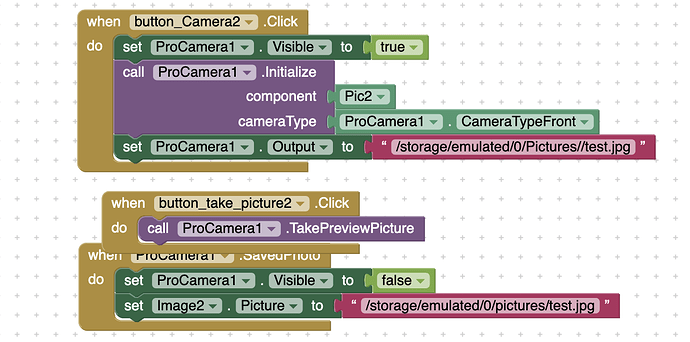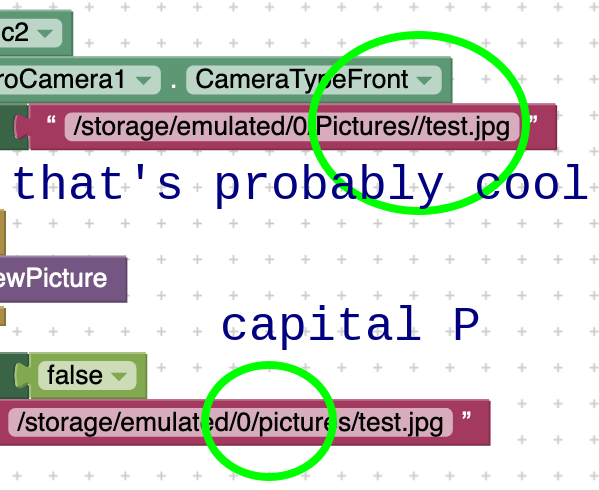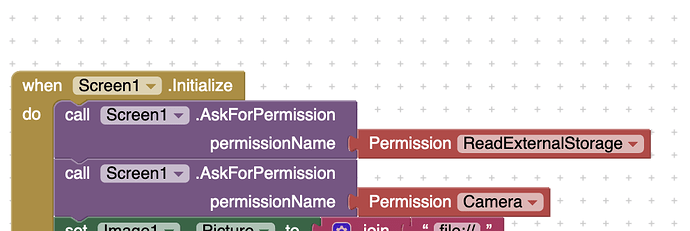You could check my guide: (take a look at section 1-2: using the camera)
In the guide I mention that a proper way to save to external is to use shared folders. This is future-proof. If you follow my guide, you won't have problems with write permissions, and also you don't need to change the project's file scope. What I propose is to use the Pro Camera extension, which doesn't rely on write_permissions. Still you'll have to save the photos either in the ASD, or a shared folder (/Pictures or /DCIM). Writing to those directories does not require WRITE_EXTERNAL_STORAGE and is recommended by Android.
I first mentioned it here in this thread.
What I didn't mention though is that it's future-proof. It doesn't rely on outdated permissions or legacy mode. It's pure API 30+ compatible protocol/method.
Please let me summarize one more time:
The camera component is broken: you can replace it with Pro Camera extension.
The file component is broken: you can replace it with TaifunFile extension.Done! API 30 is yours.
You're future-proof. No manifest editing, no flags setting, nothing.
You write into the shared folders, and that's what android wants you to do.
Final disclaimer: I really don't know what "legacy mode" is. I'm not sure it's an outdated thing. The opinions vary.
From the AI2 reference page we get this:
Legacy: Files will be read from and written to the file system using the App Inventor rules prior to release nb187. That is, file names starting with a single
/will be read from and written to the root of the external storage directory, e.g.,/sdcard/. Legacy functionality will not work on Android 11 or later.
But, I'm asking, /Pictures (for example) is not a valid shared folder path? In my understanding, it probably is. But maybe I'm wrong, and the only up-to-date way is to use full path (/storage/emulated/0/Pictures). I know full path works (without legacy mode). But not on the built-in components.
What is a full path anyway? (I'm getting philosophical here). There are just mount points. And what we call "file scope" sounds like "mount point" to me. But back on track, /storage/emulated/0/Pictures/myphoto.jpg is considered a full path and works well with components/extensions that don't rely on write_external permission.



 Have a good day
Have a good day


